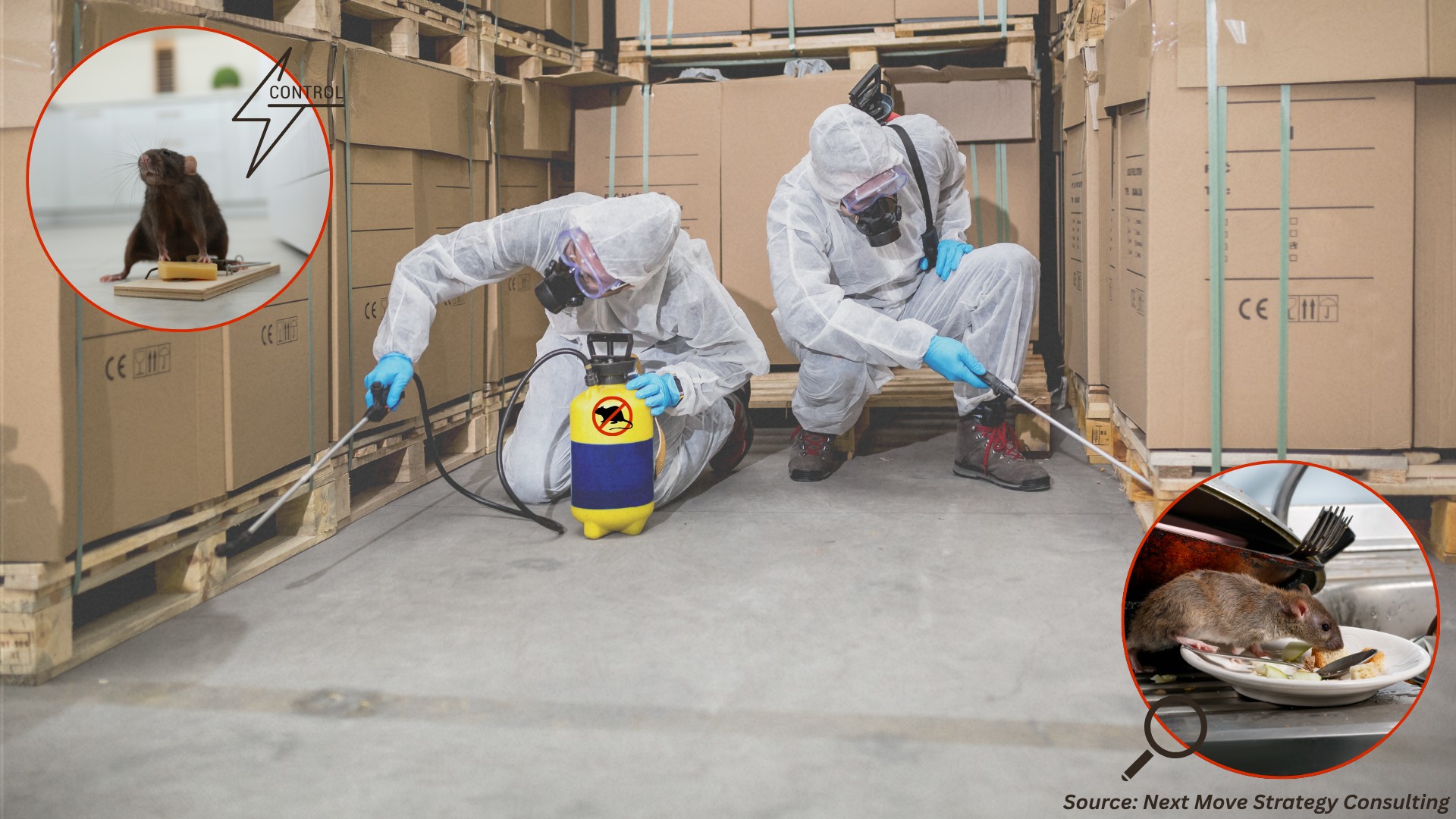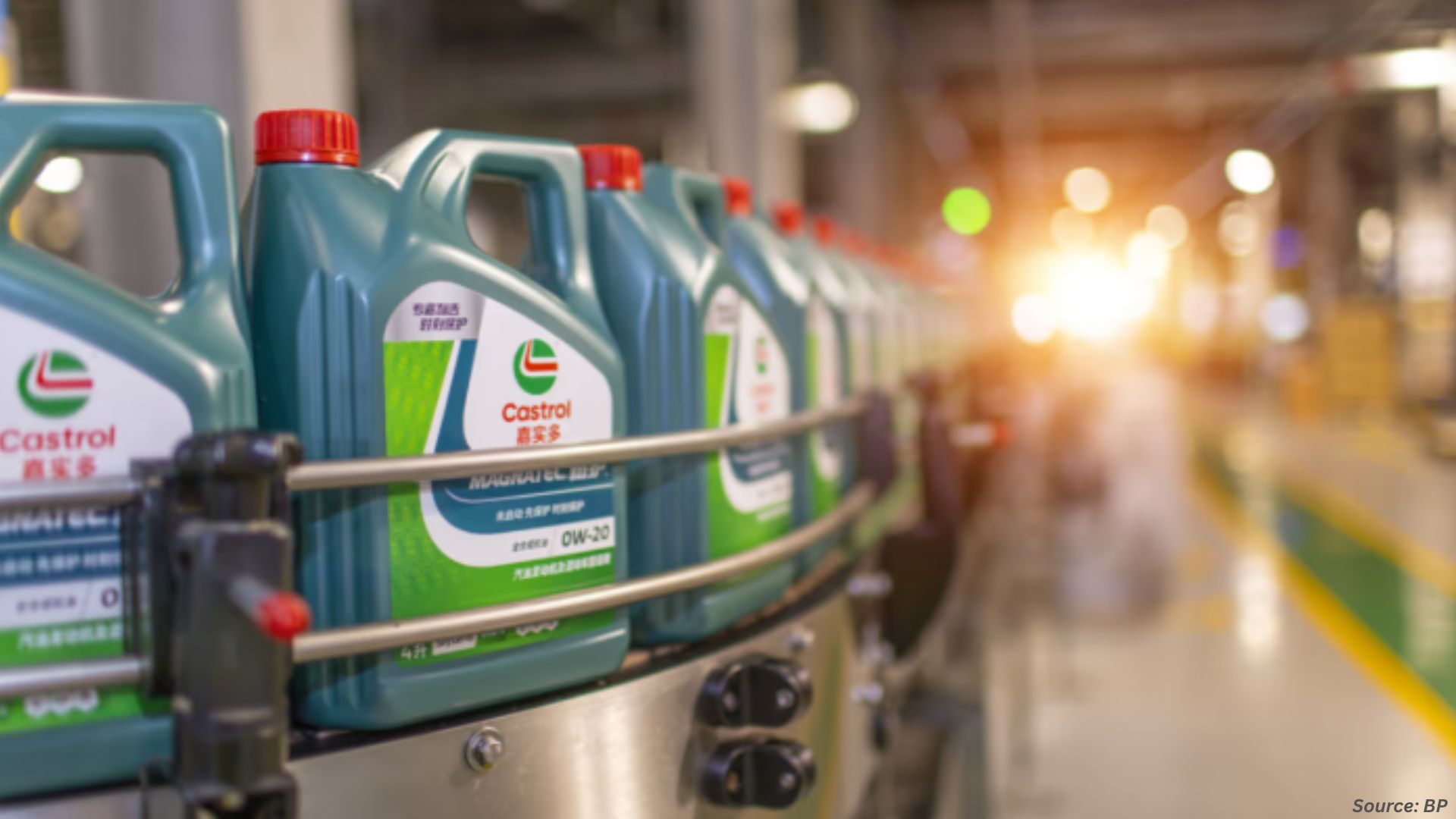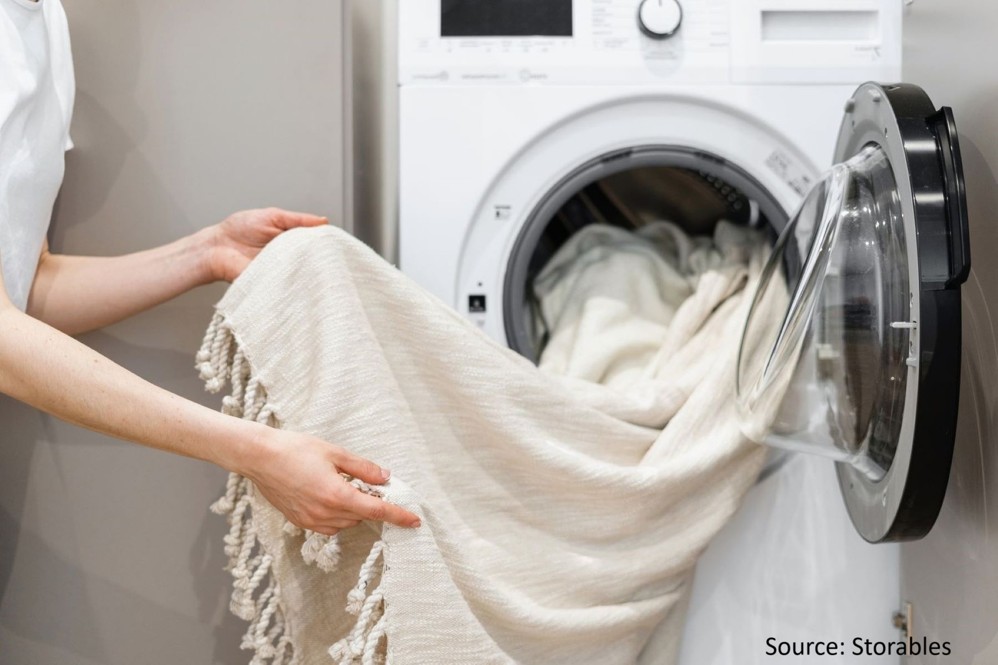What’s Driving the Rodent Control Pesticide Market Growth in 2025?
Published: 2025-09-10

Rodents like rats and mice are more than just a nuisance—they’re a global challenge, damaging crops, spreading diseases, and wreaking havoc in homes and businesses. With urban populations booming and climate change creating ideal conditions for rodent infestations, the Rodent Control Pesticide Market is evolving fast.
In 2025, this market is valued at USD 6.48 billion and is projected to hit USD 8.44 billion by 2030, growing at a compound annual growth rate (CAGR) of 5.5%. Let’s dive into the trends shaping this dynamic industry.
The Rise of Eco-Friendly Rodenticides
Environmental concerns are pushing the pest control industry toward sustainable solutions. Traditional chemical rodenticides, while effective, often harm non-target species and ecosystems. In response, companies are investing heavily in bio-based and biodegradable rodenticides.
-
Why It Matters: Consumers and regulators are demanding greener alternatives. For example, the U.S. Environmental Protection Agency (EPA) enforces strict guidelines under the Federal Insecticide, Fungicide, and Rodenticide Act (FIFRA), These pesticides must meet strict federal and state compliance standards. This oversight ensures product safety and effectiveness but also increases costs and regulatory burdens for manufacturers. As a result, the market favours established, compliant players while discouraging the entry of low-quality or non-compliant products, ultimately promoting safer pest control solutions.
-
Key Developments: Companies like Neogen Corporation plays a significant role in rodent control by developing and distributing various rodenticides and related products. They offer solutions for both professional pest management and agricultural settings, focusing on reducing rodent-related damage to crops and property. Neogen also partners with other companies, like Syngenta, to expand its reach in the rodenticide market.
-
Syngenta and Neogen Corporation have entered a licensing agreement granting Neogen exclusive rights to market and sell Talon®-G and Talon Weatherblok® XT rodenticides in the U.S. and Canada. These products, which contain brodifacoum, are powerful second-generation anticoagulants known for their single-feed effectiveness. Strategically, this may allow Syngenta to focus on developing next-generation pest control innovations, while Neogen expands its rodenticide portfolio and strengthens its position in the North American pest control market through established, trusted brands.
-
BASF offers Selontra® Rodent Bait to control rodents more effectively, efficiently, and profitably than ever before. The result is far less time spent cleaning and servicing bait stations and more time to devote to other vital actions, like inspecting for conducive conditions, communicating with staff, performing exclusion, and searching for and treating burrows.
-
-
Market Impact: The partnership strengthens Neogen’s product lineup and market position, ensures sustained availability of proven rodenticides, and frees Syngenta to pursue innovation — collectively driving growth and stability in the rodenticide market. Alongside, BASF’s efficiency-oriented positioning can disrupt the market by appealing to commercial and industrial users looking for scalable, time-saving rodent solutions.
Smart Technology in Rodent Control
Technology is revolutionizing how we tackle rodent infestations. From Internet of Things (IoT)-enabled traps to automated bait stations, smart pest control solutions are gaining traction for their precision and efficiency.
-
Smart Digital Pest Control: Anticimex SMART is an intelligent system that keeps an eye on things you don't want to see. The company installs a system of strategically placed sensors that detect infestations and non-toxic traps that efficiently deal with pests. All Anticimex SMART traps are sustainable and non-toxic. It's better for the environment, it creates a healthier work environment and it means no pesticides.
-
IoT and Automation: Syngenta, in 2024, launched new SecureChoice remote rodent monitoring. Digital monitoring enables a more proactive strategy for managing rodent issues by pinpointing the exact location and timing of activity, allowing for faster and more effective interventions to prevent infestations. Remote sensing technology provides continuous surveillance of facilities and maintains a complete, traceable record of site cleanliness. According to Syngenta’s PPM Digital Lead, Gary Nicholas, this advanced system alerts pest professionals only when rodent activity is detected in monitored zones—enabling precise, targeted rodent control across any facility. Digital monitoring pinpoints rodent entry points, enabling quicker, cost-effective control with minimal disruption. It adds confidence and precision to pest management services.
- Automated Baits: Rentokil provides specialized, sustainable commercial rodent control solutions—such as connected bait stations, snap traps, proofing, and tracking technologies—to protect businesses from diverse rodent risks while ensuring compliance with local laws and industry regulations.
For instance, Rodent Ceiling Trap is a discreet, non-toxic rodent control solution ideal for commercial spaces with hard-to-reach ceiling voids. Engineered for long-lasting and humane performance, it features adjustable sensitivity and a visual indicator for efficient monitoring and maintenance.
These smart technologies are making rodent control more efficient and less labor-intensive, with IoT and automation increasingly adopted.
Integrated Pest Management (IPM) & Rollins Gains Momentum
Integrated Pest Management (IPM) is an ecosystem-based strategy that focuses on long-term prevention of pests or their damage. It combines techniques such as biological control, habitat manipulation, modification of cultural practices, and use of resistant varieties. This holistic approach is becoming a cornerstone of modern pest control strategies.
Rollins, Inc., headquartered in Atlanta, Georgia, the US, is a parent company to many pest control brands, including Orkin, which offers rodent control services. It further provides its services under many other brands such as Aardwolf Pestkare, Clark Pest Control, Crane Pest Control, Critter Control, HomeTeam Pest Defense and IFC (Industrial Fumigant Company). It serves to residential, industrial and commercial customers. It operates in the Americas, the Middle East, Asia Pacific, Europe and Africa.
Urbanization and Climate Change Fuel Demand
-
Climate Impact: Rapid urbanization and rising global temperatures are creating ideal conditions for rodent populations, driving demand for rodenticides across various sectors.
-
Ongoing Urban Growth: The World Bank’s initiatives like Comoros - Coconut Rehabilitation and Rodent Control Project, aimed to extend and improve coconut and copra production on the three islands of Grande Comore, Anjouan, and Moheli, through rodent control, expected in increasing productivity through replanting and new plantings, and improving copra processing and marketing.
Urbanization and climate change, thus, are key drivers of the rodent control pesticide market, with surging demand.
Regulatory Challenges and Resistance Concerns
Stringent regulations and growing pesticide resistance are shaping the rodenticide market, pushing companies to innovate while adhering to a complex web of federal and state regulations concerning pesticide usage, chemical reporting, safety standards, and environmental protection.
-
IPM-based local programs not only reduce rodent infestations but also protect public health by limiting exposure to rodent-borne pathogens.
-
Rodent control faces major challenges, primarily due to limited funding, staffing, and public awareness. Despite successes in reducing rodent populations and related diseases, many programs struggle to maintain these outcomes over time. Since rodents are key carriers of numerous diseases and often live near humans, framing rodent control as a public health priority—and promoting collaboration between communities and health professionals—is essential for building sustainable, long-term solutions.
Regulatory hurdles and rodent resistance are challenges, but they’re also spurring innovation in safer, more effective rodenticides.
Next Steps: Actionable Takeaways for Stakeholders
The rodent control pesticide market is at a pivotal moment, balancing innovation with regulatory and environmental challenges. Here are actionable steps for businesses, homeowners, and policymakers:
1. Invest in Eco-Friendly Solutions: Businesses should prioritize bio-based rodenticides to meet consumer demand and comply with regulations like FIFRA.
2. Adopt Smart Technologies: Pest control companies can gain a competitive edge by integrating IoT and automation into their services.
3. Embrace IPM Strategies: Homeowners and businesses should explore IPM for sustainable, long-term rodent control.
4. Monitor Regulatory Changes: Stay informed about EPA and EU pesticide regulations to ensure compliance and avoid penalties.
5. Focus on R&D: Manufacturers should allocate budgets to develop non-anticoagulant rodenticides to counter resistance.
Final Thoughts:
The rodent control pesticide market is growing rapidly, driven by urbanization, climate change, and technological advancements. By embracing smart technologies, and IPM, stakeholders can address challenges and capitalize on opportunities in this evolving industry.
About the Author
 Sneha Chakraborty is a seasoned SEO Executive and Content Writer with over 4 years of experience in the digital marketing space, bringing a strong command of online visibility strategies and a keen insight into the evolving digital landscape. She specializes in enhancing online visibility and user engagement through data-driven strategies and creative content solutions. Sneha is passionate about translating complex digital concepts into accessible content for a wide audience. Outside of work, she enjoys reading, sketching, and exploring the outdoors through nature photography.
Sneha Chakraborty is a seasoned SEO Executive and Content Writer with over 4 years of experience in the digital marketing space, bringing a strong command of online visibility strategies and a keen insight into the evolving digital landscape. She specializes in enhancing online visibility and user engagement through data-driven strategies and creative content solutions. Sneha is passionate about translating complex digital concepts into accessible content for a wide audience. Outside of work, she enjoys reading, sketching, and exploring the outdoors through nature photography.
About the Reviewer
 Sanyukta Deb is a seasoned Content Writer and Team Leader in Digital Marketing, known for her expertise in crafting online visibility strategies and navigating the dynamic digital landscape. With a flair for developing data-driven campaigns and producing compelling, audience-focused content, she helps brands elevate their presence and deepen user engagement. Beyond her professional endeavors, Sanyukta finds inspiration in creative projects and design pursuits.
Sanyukta Deb is a seasoned Content Writer and Team Leader in Digital Marketing, known for her expertise in crafting online visibility strategies and navigating the dynamic digital landscape. With a flair for developing data-driven campaigns and producing compelling, audience-focused content, she helps brands elevate their presence and deepen user engagement. Beyond her professional endeavors, Sanyukta finds inspiration in creative projects and design pursuits.
















Add Comment